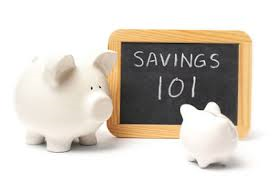Financial Literacy for Kids
There are different ways children learn about the value of money, follow these guidelines to put youngsters on the right track.
Birth to age 8 Assign basic household chores. Even 4 year olds can make his or her bed and pick up playthings. Have a list of "little jobs" that
 small hands can do to earn a dime or quarter. Provide a piggy bank for savings and little sheets for easy record keeping. Don't buy toys on demand; help them to look forward to birthdays and holidays for special items instead. Help children learn the difference between needs, wants and wishes; this will prepare them for making good spending decisions in the future.
small hands can do to earn a dime or quarter. Provide a piggy bank for savings and little sheets for easy record keeping. Don't buy toys on demand; help them to look forward to birthdays and holidays for special items instead. Help children learn the difference between needs, wants and wishes; this will prepare them for making good spending decisions in the future.
Ages 8 and Older Allow your child to begin making more decisions on their own, encourage comparison shopping for instance. Give a specific allowance and stick to it - or none at all. That's right! Some parents have found the best way to educate children to value money is to have them earn it for doing extra work. Don't pay youngsters for doing regular chores, if you do, there may come a time when she or he might refuse you because money isn't needed. Communicate with children your values regarding money and how to save it, make it grow, and most importantly how to spend it wisely.
For more tips on teaching financial literacy to your children, see OCP's article Financial Literacy 101 .
Basic Tips for all ages When giving children an allowance or income, give the money in denominations that encourages saving. For example if the amount is $5, give out five $1 bills and encourage at least one be set aside in savings.
Take the kids with you when you open their savings accounts. Beginning a savings habit early is one of the keys to savings success.
Show children how to evaluate ads on TV, radio, internet, and in print. Are there alternative products available that will do a better job, perhaps for less cost? Remind them that if something sounds too good to be true, it usually is.